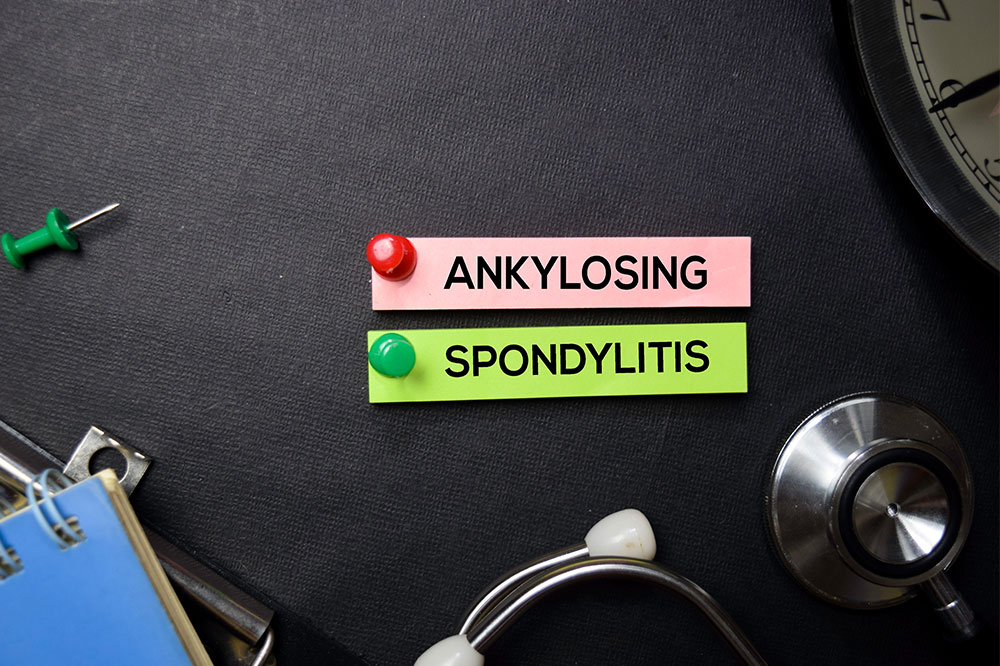
Ankylosing spondylitis – Causes, symptoms, and management options
Ankylosing spondylitis is a type of arthritis that leads to chronic inflammation in the spine. The condition typically results in pain, stiffness, and decreased mobility. Research shows that about 3.2 million people, or 1% of the country’s population, are affected by the condition. While there is no cure for this condition, one can manage its symptoms by receiving an early diagnosis and timely treatment. Here is a look at its causes, signs, and management options:
Causes
Although scientists have not determined the precise cause of AS, studies show that genetic factors may play a role. The chance of developing ankylosing spondylitis is considerably more in those who carry the HLA-B27 gene, which is a mutated variant of the antigen-B gene, HLA-B. But carrying the gene does not necessarily mean one will be affected by the condition. In fact, 80% of children who inherit the faulty gene from a parent do not develop the condition. Further, being affected by ulcerative colitis, Crohn’s disease, and psoriasis may also put one at risk of developing ankylosing spondylitis.
Early symptoms
Apart from limited mobility, the condition may cause the following symptoms:
- A hunched posture
- Pain in the neck, spine, joints, lower back, and hips
- Stiffness in the lower back after long periods of inactivity
- Fatigue
- Breathing difficulty
- Abdominal pain
- Loss of appetite
- Diarrhea
Ankylosing spondylitis mainly affects the following areas in the body:
- The joint between the base of the spine and the pelvis
- Lower back vertebrae
- The hip and shoulder joints
- The cartilage between the breastbone and the ribs
- The points where tendons and ligaments join the bones in the spine
- The area along the back of the heel
Advanced symptoms
If the condition grows in intensity, the body attempts to mend the issue by forming a new bone that fills the space between vertebrae. This fusion eventually joins parts of vertebrae and limits flexibility, stiffens the rib cage, and limits lung function. This, along with inflammation, may exert pressure on the heart and increase the risk of heart disease. Ankylosing spondylitis also weakens bones, affecting the vertebrae. Weakened vertebrae may make one prone to injuries in the spinal cord or spinal nerve. In extreme cases, the vertebrae may crumple or be fractured. Further, blurry vision, inflamed eyes, or over-sensitivity to light may also be experienced. The severity of the symptoms may vary. If one experiences any of these signs, they should consult a medical professional. The condition shares its early symptoms with other health concerns, so one should get them checked. This way, doctors can quickly determine the cause and initiate appropriate treatments.
Diagnosis
A healthcare professional first examines the patient’s family history and symptoms. A doctor may request imaging scans or MRIs to detect spinal problems and check for arthritis or rule out other problems. Finally, they might recommend blood tests to detect the presence of the HLA-B27 gene.
Management options
As ankylosing spondylitis doesn’t have a cure, treatments focus on preventing long-term complications, reducing joint damage, and easing pain. Regular exercises and guided physical movements can ease the pain and slow the disease progression. Some patients may require joint replacement surgery—a process to implant an artificial joint. Kyphoplasty is one way to fix a crooked spine. Doctors may also recommend following healthy eating habits and lifestyle to ease the symptoms and speed up recovery. Here are some food choices one may have to consider:
Foods to manage inflammation: Foods rich in omega-3 fatty acids are shown to reduce inflammation. So, one should opt for chia seeds, flax seeds, walnuts, and fatty fish like salmon, tuna, and sardines. Further, whole grains like brown rice, quinoa, oatmeal, and corn are rich in fiber, which can help manage certain symptoms. One can also opt for anti-inflammatory herbs and spices; ginger tea and turmeric milk can help with arthritis pain.
Foods for bone health: As the condition weakens the bones, one should opt for calcium-rich foods, including leafy greens like kale, almonds, tofu, broccoli, dairy products, and sardines with bones. Vitamin D is another essential nutrient for strong bones as it helps the body absorb calcium. Seafood, egg yolks, and cod liver oil, along with adequate sun exposure, can help raise vitamin D levels.




